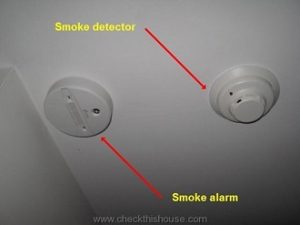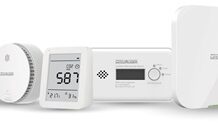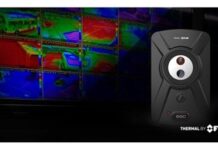
It’s important to have enough smoke alarms in your home. Fire research has demonstrated that with today’s modern furnishings, fires can spread much more rapidly than in the past when more natural materials were used. Because of this, having a sufficient number of properly located smoke alarms is essential to maximize the amount of available escape time. For many years NFPA 72, National Fire Alarm and Signaling Code, has required as a minimum that smoke alarms be installed inside every sleep room (even for existing homes) in addition to requiring them outside each sleeping area and on every level of the home. (Additional smoke alarms are required for larger homes.) Homes built to earlier standards often don’t meet these minimum requirements. Homeowners and enforcement authorities should recognize that detection needs have changed over the years and take proactive steps to make sure that every home has a sufficient complement of smoke alarms.
Installing smoke alarms
• Choose smoke alarms that have the label of a recognized testing laboratory.
• Install smoke alarms inside each bedroom, outside each sleeping area and on every level of the home, including the basement.
• On levels without bedrooms, install alarms in the living room (or den or family room) or near the stairway to the upper level, or in both locations.
• Smoke alarms installed in the basement should be installed on the ceiling at the bottom of the stairs leading to the next level.
• Smoke alarms should be installed at least 10 feet (3 meters) from a cooking appliance to minimize false alarms when cooking.
• Mount smoke alarms high on walls or ceilings (remember, smoke rises). Wall-mounted alarms should be installed not more than 12 inches away from the ceiling (to the top of the alarm).
• If you have ceilings that are pitched, install the alarm within 3 feet of the peak but not within the apex of the peak (four inches down from the peak).
• Don’t install smoke alarms near windows, doors, or ducts where drafts might interfere with their operation.
• Never paint smoke alarms. Paint, stickers, or other decorations could keep the alarms from working.
• For the best protection, interconnect all smoke alarms. When one smoke alarm sounds they all sound. Interconnection can be done using hard-wiring or wireless technology.
• When interconnected smoke alarms are installed, it is important that all of the alarms are from the same manufacturer. If the alarms are not compatible, they may not sound.
• There are two types of smoke alarms – ionization and photoelectric. An ionization smoke alarm is generally more responsive to flaming fires, and a photoelectric smoke alarm is generally more responsive to smoldering fires. For the best protection, both types of alarms or combination ionization-photoelectric alarms, also known as dual sensor smoke alarms, are recommended.
• Keep manufacturer’s instructions for reference.
Testing smoke alarms
• Smoke alarms should be maintained according to manufacturer’s instructions.
• Test smoke alarms at least once a month using the test button.
• Make sure everyone in the home understands the sound of the smoke alarm and knows how to respond.
• Follow manufacturer’s instructions for cleaning to keep smoke alarms working well. The instructions are included in the package or can be found on the internet.
• Smoke alarms with non-replaceable 10-year batteries are designed to remain effective for up to 10 years. If the alarm chirps (warning that the battery is low), replace the entire smoke alarm right away.
• Smoke alarms with any other type of battery need a new battery at least once a year. If that alarm chirps (warning that the battery is low), replace the battery right away.
• When replacing a battery, follow manufacturer’s list of batteries on the back of the alarm or manufacturer’s instructions. Manufacturer’s instructions are specific to the batteries (brand and model) that must be used. The smoke alarm may not work properly if a different kind of battery is used.











